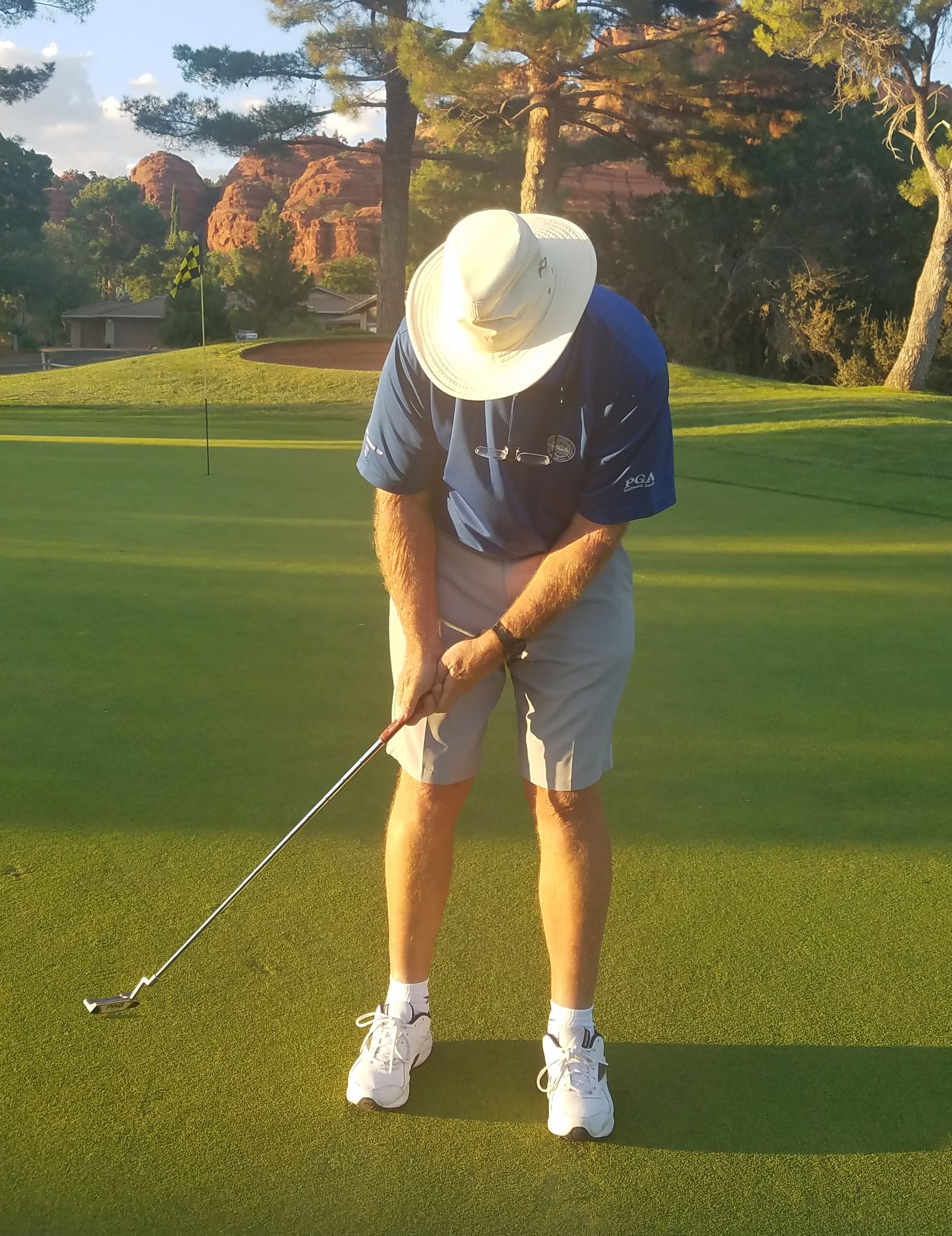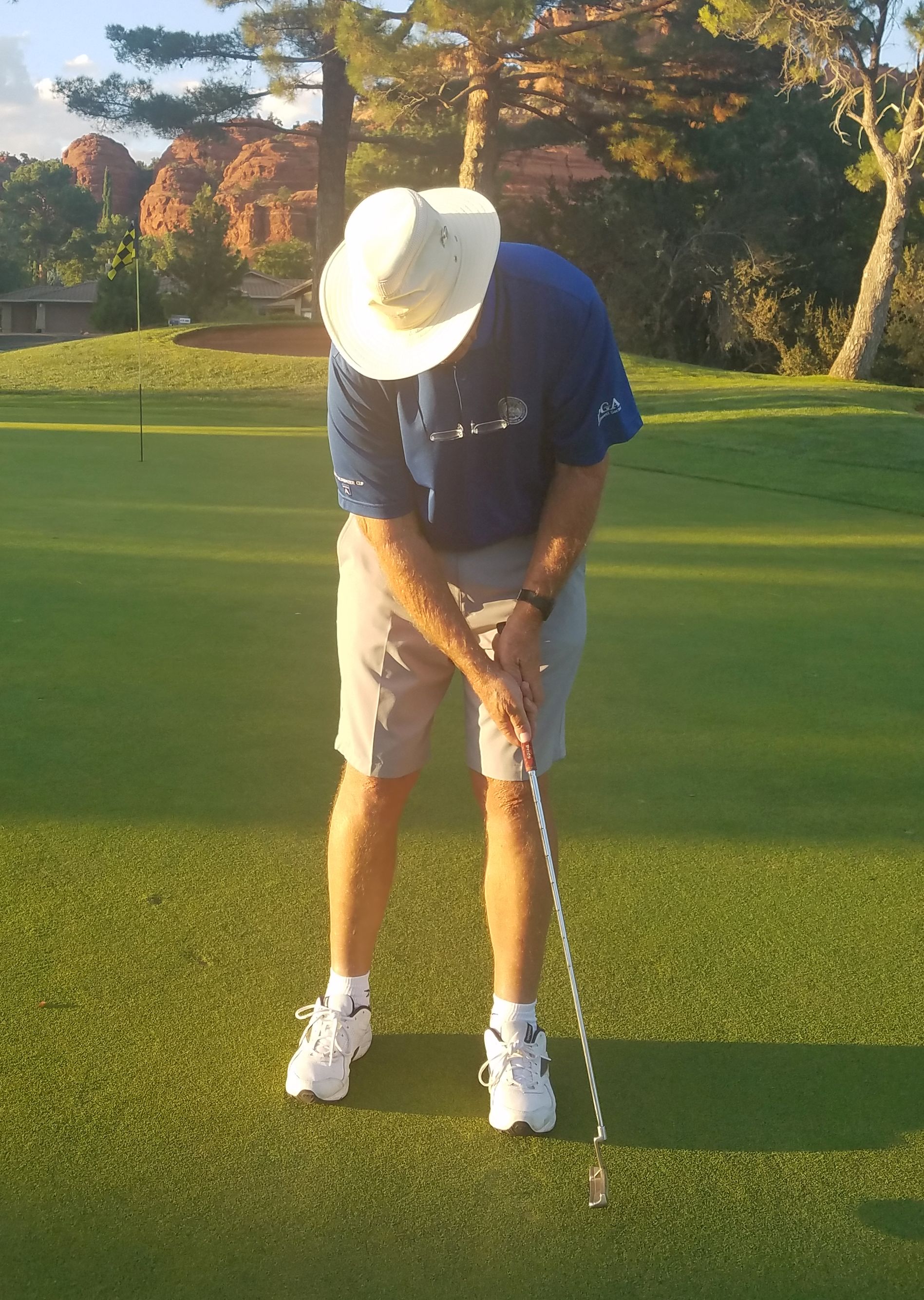September 12, 2019
Improve your Putting Feel
 Earlier this year I attended a PGA seminar that was conducted by Stan Utley. Stan is a winner on the PGA Tour and is a highly regarded teacher specializing in the short game. He has written four excellent books on the subject. As a teacher, you must always be open to new ideas and new ways of communicating your thoughts and concepts to your students. First he talked about the basic functions of the putter and wedge. Then the motion required in making a consistent effective strike. Last he shared his insights on conveying this knowledge to his students.
Earlier this year I attended a PGA seminar that was conducted by Stan Utley. Stan is a winner on the PGA Tour and is a highly regarded teacher specializing in the short game. He has written four excellent books on the subject. As a teacher, you must always be open to new ideas and new ways of communicating your thoughts and concepts to your students. First he talked about the basic functions of the putter and wedge. Then the motion required in making a consistent effective strike. Last he shared his insights on conveying this knowledge to his students.
I gleaned many useful tips that are now added to my reservoir of golf knowledge. What I would like to share with you today is a way to improve your putting feel that I got from this seminar. Stan believes that the putter should be swung from a central pivot point with a concept of "dead weight". The putter is swung back to a certain point; at that point energy has been created based on the length and height of the backswing. Once the desired backswing has been created; the club is allowed to swing back to the ball, letting gravity to take effect. Once the putter makes contact with the ball there is a loss of energy and the putter will slow down and come to a stop soon after the ball. The "dead weight" concept is that the clubhead with be swung back to the ball with little or no effort, much like a pendulum does once it has reached the top of its' arch and allowed to swing back. This is a condensed simplified version of his putting method.
 The best putters have very smooth rhythmical strokes. There is an arc that the putter travels and the arms and shoulders facilitate this action. The hands provide the feel, but not significant power. Swing the club back far enough to create enough energy to be able to swing the club back to the ball to produce the correct distance. Taking the club back too short will necessitate adding power to the stroke, usually resulting in a jerky motion. Bringing the club back too far will require you to manipulate and slow the club down to regulate distance. Both will cause problems with accurate distance control.
The best putters have very smooth rhythmical strokes. There is an arc that the putter travels and the arms and shoulders facilitate this action. The hands provide the feel, but not significant power. Swing the club back far enough to create enough energy to be able to swing the club back to the ball to produce the correct distance. Taking the club back too short will necessitate adding power to the stroke, usually resulting in a jerky motion. Bringing the club back too far will require you to manipulate and slow the club down to regulate distance. Both will cause problems with accurate distance control.
Watch Rickie Fowler, Jordan Spieth, or Tiger Woods. They have great repeatable strokes that incorporate much of what Stan Utley likes in a putting stroke. They have a long appropriate backswing with a flowing unforced motion back to the ball with a finish that is shorter than the length of the backswing. In most cases, your follow-through should never be longer than your backswing. Follow-throughs vary depending on the distance of the putt, but generally a putt under 20 feet will have a 2 to 1 ratio. Take back 6 inches and follow-through 3 inches.
If you are inconsistent with distance control, try this drill. On the practice putting green take three balls and intentionally swing back further than you are comfortable and then let gravity take control and let the putter swing naturally back to the ball. Do not stop the club after contact, but let it stop on its own. You will find it difficult not to interfere with the downward motion of the club and the hit. Hit the three balls and judge which balls were struck with the least interference. Your eyes and hands should be recording the feel for this distance. Repeat until you can freely swing the club with no interference. The balls should be now consistent in distance. Vary the length of the backswing and evaluate the distance each with achieve. Your eyes and hands are what judge distance, trust them. This drill will greatly help you gain feel for the putter.
Putting is an art form. There are physical and mechanical elements that make putting easier to accomplish. But even if you master the mechanical, you must putt with visualization and feel. Stan Utley's method works, but it might not be for everyone. He would like longer backswings with shorter follow-throughs. His pros on Tour have had a lot of success. But other great putters adhere to "as far back you take it should be how far through you should go". I could go on with the variations of excellent putters, but generally their fundamentals were pretty close. What needs to be remembered is that putting is a feel. Let the eyes lead the action and trust your hands for the feel.



